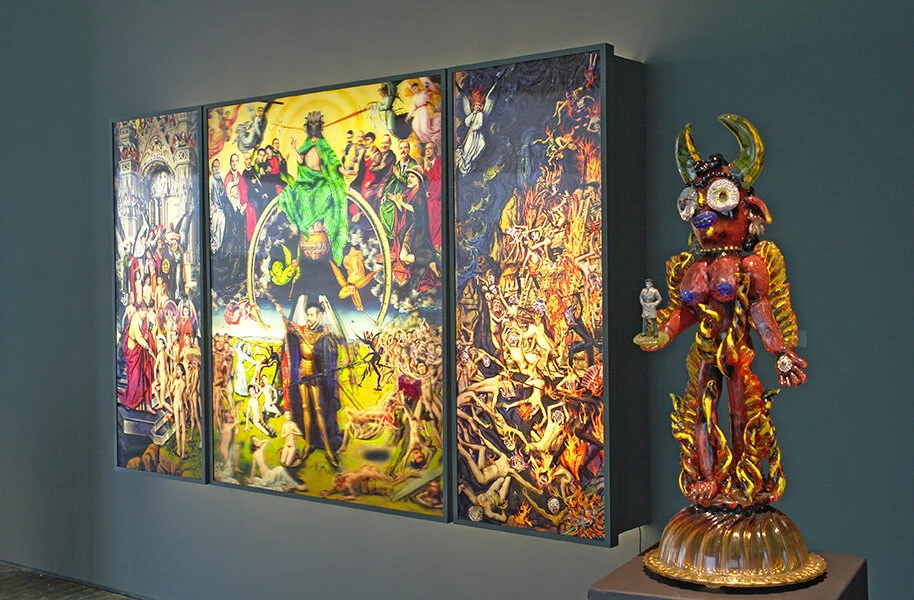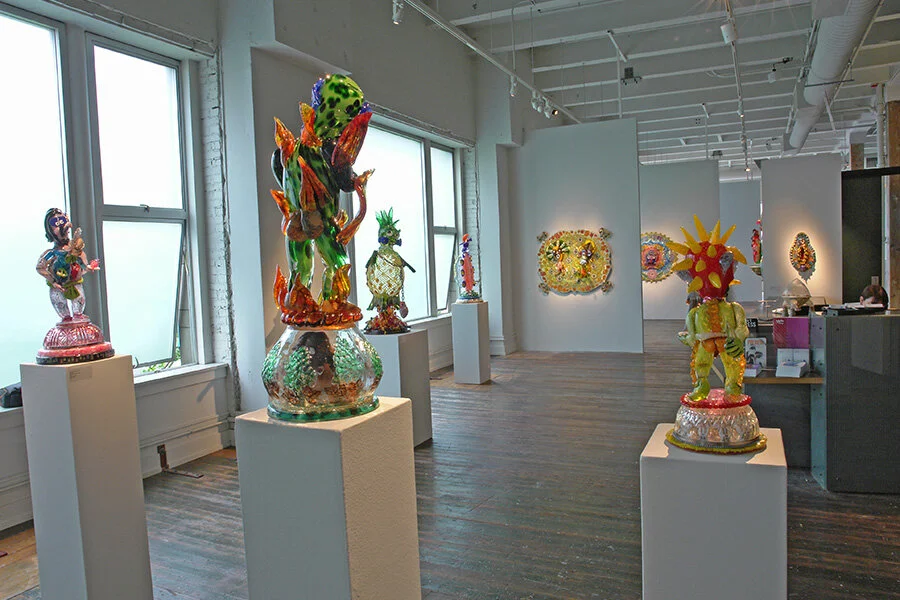Pimp My Glass
Worlds collide in the pieces of the brothers with vibrant and sharp images that span from religion and history to products and pop culture
Freely splicing together Mexican folk art, corporate logos, religious icons, and masked wrestlers, the brothers de la Torre use the extraordinary ability of glass to take on almost any color or shape to populate their cross-cultural artistic universe of characters and symbols that flaunt traditional hierarchies in the service of an irreverent take on the dizzying experience of living between the contrasting image-saturated cultures of México and the U.S.
Born in Guadalajara, México, and raised in strict, Catholic, all-boys schools, Einar and Jamex De La Torre moved to the U.S. in the early 1970s, where they found themselves immersed in the freewheeling multi-ethnic culture of sunny Southern California. After studying at California State University of Long Beach (Jamex graduated in 1983 with a BFA in sculpture), the brothers started a glass business launched a collaborative partnership that has flourished as the two have devoted themselves to making art. The brothers currently work and reside in both the United States and México, bouncing back and forth across the border in a lifestyle that clearly has had a major influence on their artwork.
Worlds collide in the pieces of the brothers with vibrant and sharp images that span from religion and history to products and pop culture. In Quinta Pon Ban Pot, a pile of coke bottles burns at the base of a yellow cauldron, atop of which sit two indigenous-looking men, clothed in almost nothing at all. In Crossing the Desert, a frightened-looking man with a hole in his side is crucified not on a cross, but a cactus. And in Metal Cutout (2008), a logo of the laundry detergent Tide can be seen among swirls depicting Nike shoes, swirls of colorful masks, and multiple, uneven logos of major television networks.
While taking on sometimes weighty themes of immigration, cultural assimilation and religion, a sense of humor is also present. In Killing the Inner Child (2004), the figure depicted wears a mask similar to those found in Mexican wrestling. In Four Eyes Chalice (2004), the large skeleton mask that is reminiscent of those seen in El Dia de los Muertos celebrations has eyes made of dice, with the number 4 facing outward. A pun on the derogatory term for a glasses wearer, Four Eyes Chalice reveals a playfulness that can be easily overlooked.
Traver Gallery
For more than 40 years, the Traver Gallery has served as a theater for the visual arts, providing space for artists to explore their ideas and share their discoveries with the world. We are dedicated to representing artists at all stages of their career — emerging, mid-career and established — our focus is on artists who work with materials in unique and innovative ways. Located in the heart of downtown Seattle, Traver Gallery is one of the country’s premier exhibition spaces for contemporary studio glass, painting, sculpture, and installation art.
Einar and Jamex De La Torre: Pimp My Glass
Text by Paul Travisano
May 7 – May 30, 2010
William Traver Gallery, 110 Union Court Northwest, Washington, DC, 20001
TraverGallery.com

























